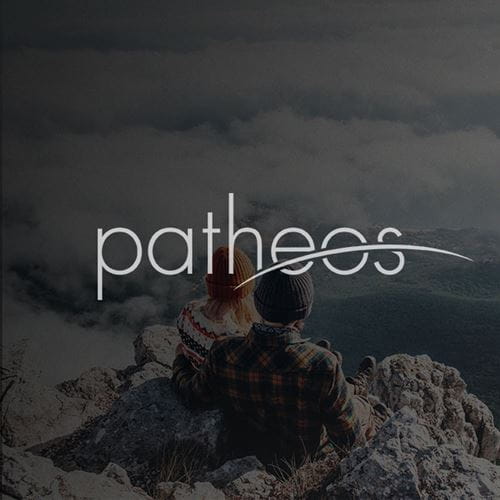- Trending:
- Pope Francis
- |
- Resurrection
- |
- Trump
- |
- Social Justice
- |
- Peace
- |
- Love

RELIGION LIBRARY
New Age
Ultimate Reality and Divine Beings
No single theology or cosmology characterizes the New Age. Rather, the New Age is united in rejecting the dominant theology of western monotheism, most explicitly Christianity and Judaism, though implicitly Islam as well, through an emphasis on the individual rather than religious authority embodied in institutions. This attitude, a key trait of American metaphysical religion, stands in contrast to the cardinal tenets of the traditional Christian and Jewish theology: a single transcendent, omniscient, omnipotent deity as described in the Bible, alongside a view of the cosmos as created and sustained by such a deity.
The most common theologies within the New Age envision God as within each individual. Though New Agers tend to avoid categorizing themselves along traditional theological categories, scholars label such New Age beliefs monism, pantheism, and panentheism. Monism declares that the summation of the entire universe is the divine, and that each individual within the cosmos represents a small sliver of god. Pantheism upholds a similar position, that god is within all things. Panentheism postulates that all things are in god, but that god transcends the sum of all these things. All three philosophies lead their New Age adherents to envision the self as the seat of the divine. New Agers tend to envision god as impersonal and diffuse, part of all living things. Such a theology enables New Age practitioners to see the divine in humans, nature, the earth, and inanimate objects, though some New Agers limit god to living beings. Such a holistic approach to the divine helps explain the environmental ethos that also characterizes so much of the New Age movement.
This cosmology also explains why New Agers seek self-development and self-evolution. New Age practitioners generally agree that all individuals must focus on an ultimate goal of developing the god-aspect within themselves. The various practices of the movement, what some scholars have called spiritual technologies, aim to develop the self and bring it into awareness of its nature as divine. Such spiritual technologies-for example yoga, channeling, aura-reading, and crystal work-aim to assist the practitioner in self-development.
A less popular theology within the New Age movement envisions a universe filled with multiple divinities. Scholars call such a position polytheism, though few New Agers would themselves use this characterization. Polytheism appears most frequently amongst New Age practitioners who also identify with Paganism, since the latter religious tradition assumes polytheism as a foundation. Some New Agers envision the world as filled with two deities, the cosmic ideals of male and female, whereas others believe in entire pantheons of divinities. However, like their coreligionists who accept pantheism or monism, New Agers who adopt a polytheistic theology reject the dominant western religious paradigm.
Though few New Agers promote true polytheism, most subscribe to a belief in a collection of supernatural beings who serve as teachers, masters, and spiritual guides to human beings. These teachers most often include Christ, the Buddha, Krishna, and Confucius, as well as a variety of historical or mythical mystics from the world's religious traditions. Most often, New Age practitioners access these beings through channeling or channeled texts, though some look to the sacred scriptures of the world's religions as well. Here the New Age draws upon the New Thought and Theosophical traditions, which similarly envisioned a cadre of religious teachers as offering spiritual guidance, often calling them Ascended Masters. New Age theology generally understands these beings as ontologically indistinct from normal human beings, but sees them as so highly evolved that they may serve as spiritual masters. Different New Age subcultures often include additional figures within this category, such as extraterrestrials, angels, or transdimensional beings.
Moving from views of the divine to those of the cosmos, most New Age cosmologies uphold a cyclical worldview wherein individuals, worlds, and the universe pass through multitudes of incarnations. Here the New Age borrows from the standard cosmologies of the Indian traditions, most notably Hinduism and Buddhism, which envision the cosmos passing through vast cosmic epochs, just as the individual moves from life to life. Again, this position also distinguishes the New Age from the conventional linear view of existence promulgated by the western religious traditions. This cosmology also reinforces the New Age propensity toward belief in reincarnation.
No single cosmogony, or explanation for the origin of the universe, predominates within the New Age. Most ascribe to a belief that the universe emerged from a primeval divine singularity through a process akin to birth. In this regard, some New Agers explicitly draw parallels to the scientific theory of the Big Bang, investing it with a religious meaning. Others look to similar cosmogonies drawn from world religions, such as Hinduism's golden embryo, as a model. Yet because New Agers uphold an impersonal understanding of the deity, the New Age cosmogony seldom offers a reason for the creation of the universe. Rather, New Age practitioners see the origin and development of the universe as akin to a life form developing from a seed.
Study Questions:
1. Why is it important that the New Age movement rejects the personal and yet transcendent understanding of God prevalent in western monotheistic traditions?
2. Define monism, pantheism, and panentheism.
3. Does the New Age movement include polytheism? In what sense?
4. What does New Age cosmology contribute to its understandings of the divine?










